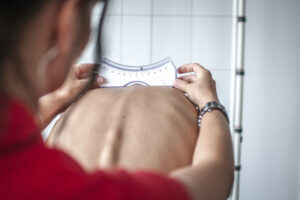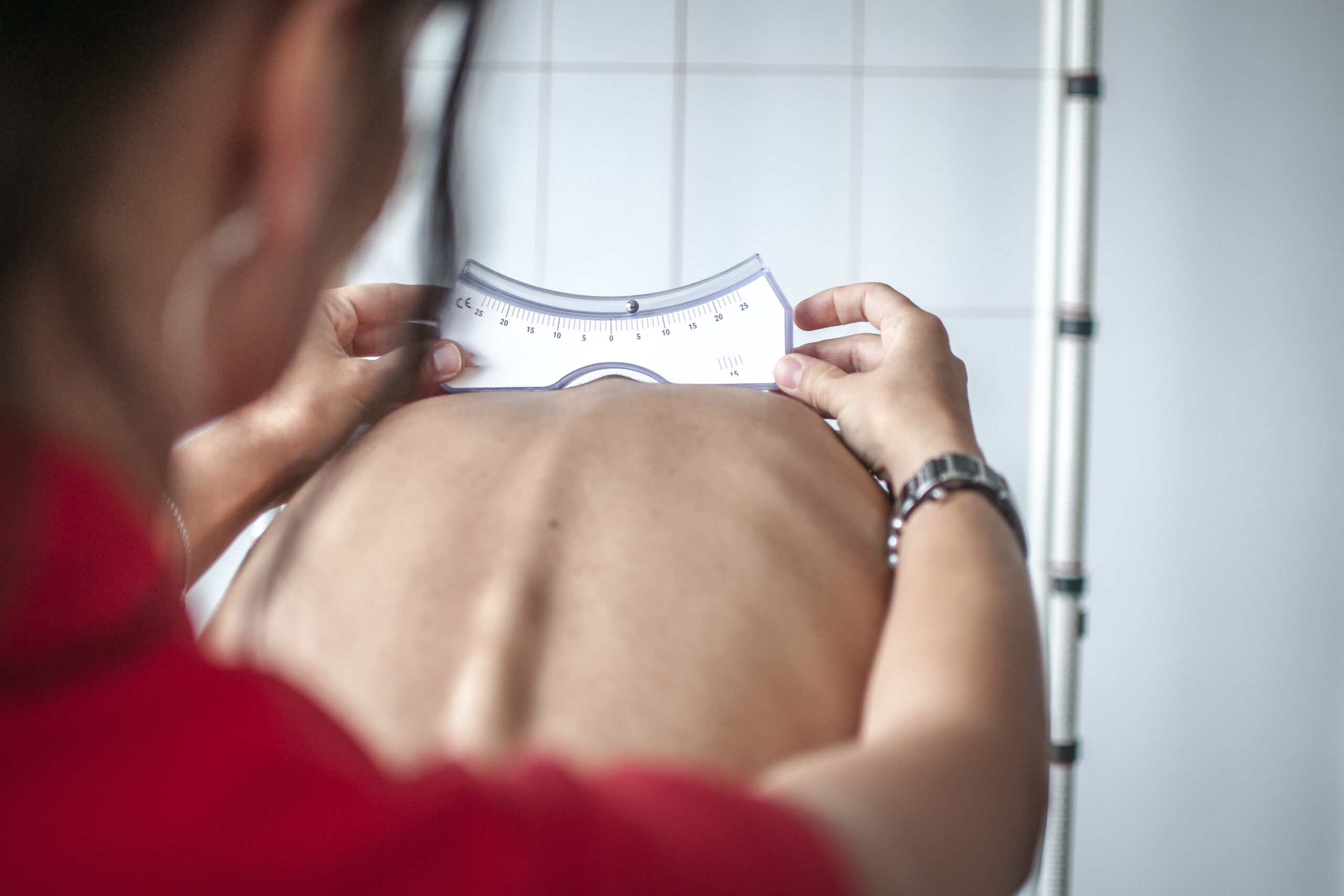Scoliosis Treatment Denver
 The team at Reinhardt Chiropractic believes in a whole-body approach to health and wellness and knows the alignment of your spine plays a large part in your overall well-being.
The team at Reinhardt Chiropractic believes in a whole-body approach to health and wellness and knows the alignment of your spine plays a large part in your overall well-being.
With their team of massage therapists, exercise specialists, and the doctor himself, the staff at Reinhardt Chiropractic are ready to treat sports injuries, from car accidents or slip-and-falls to age-related issues of the spine to conditions like scoliosis.
Scoliosis sometimes goes undetected until its advanced stages, when it begins to have painful and disfiguring effects on the body. When diagnosed early, the condition is fully treatable. But the professionals at Reinhardt Chiropractic can offer improved quality of life even to patients with advanced scoliosis or scoliosis with other health problems that may complicate treatment.
What Is Scoliosis?
Scoliosis is a sideways curvature of the spine. The amount of the curvature may vary in severity, but anything more than 10 degrees of curvature of the spine is considered scoliosis. It may be a single curve, referred to as a C curve by medical practitioners, or it may curve in both directions, known as an S curve.
Scoliosis is often diagnosed in children and teenagers. It is frequently found in patients with cerebral palsy or muscular dystrophy, but it often occurs without other diagnoses. It is unknown what causes the spine to curve in some young individuals and not others.
Symptoms of Scoliosis
If you haven’t been diagnosed with scoliosis, there are signs you should be aware of to prompt you to contact a chiropractor or other health care practitioner for a complete screening, including a physical exam and x-rays.
Symptoms You May Feel
- Weakness, a sensation of pins and needles, numbness or pain in one or both legs
- Difficulty walking
- Fatigue
- Low back pain
- Feeling stiff or tight in your back
- Difficulty breathing in advanced cases that cause compression in the body cavity
Any or all of the symptoms mentioned above can have other causes, so it’s essential that you speak to a professional.
How to Identify Scoliosis
The visual symptoms of scoliosis can be used to evaluate the chance of scoliosis before confirming with a doctor. While the early stage of the disease is rarely painful, the sooner the diagnosis is made, treatment can begin, and the better the chances of avoiding disfigurement that may limit mobility or cause pain.
Visible Symptoms
- Spine has a visible curve
- Hips, waist, or shoulders are uneven
- One shoulder blade larger than or more prominent than other
- Ribs closer to the skin and more visible on one side
- Head not centered above the hips
- Consistent lean to one side
- Dimples or discolored patches along the spine
- Limp or unbalanced stride
- Clothes hang unevenly
Many of these visual indicators can be masked by heavy muscling or a significant amount of body fat. So don’t ignore symptoms simply because you do not see any changes in the spine or body.
If you have any concerns, schedule an appointment with a healthcare professional specializing in spinal issues, like a chiropractor, for a complete exam. They will use a physical examination and x-rays to determine if scoliosis is indicated.
Levels of Severity
Many people with scoliosis suffer no real symptoms and can live their whole lives without harmful side effects. In other cases, the effects can be severe, and surgery may be needed to repair the damage to avoid a life filled with physical impairment and pain.
Mild Scoliosis
This is the most common level of scoliosis. Many people with mild scoliosis may not ever know that they have it. There are few physical symptoms, and the visual ones are hard to detect at this stage. Even if diagnosed, as long as the curvature of the spine remains mild, there is no need for treatment unless back stiffness or discomfort arises.
Moderate Scoliosis
The curve has progressed further with moderate scoliosis, and the spine may begin to twist. At this stage, visual symptoms would be pronounced, and the patient may start to feel physical symptoms, including tingling in the legs and back pain or stiffness.
Braces are often prescribed to prevent the curvature from progressing further for children who are still growing. These will not correct the curve that has already occurred, however.
Severe Scoliosis
Severe scoliosis is a debilitating condition, and it has a drastic effect on the patient’s day-to-day life. It may cause severe pain, reduce mobility, and cause difficulty breathing. Surgery is often necessary to repair or limit the damage. In older patients, a spinal fusion may be done to connect vertebrae to repair or reduce the curvature. In children who are still growing, expandable rods are implanted on either side of the spine to mitigate the curvature. These rods can be made longer to adjust to the child’s growing body.
Holistic Treatment of Scoliosis
Regardless of the severity level, if you have scoliosis, a skilled chiropractor and massage therapist can alleviate many of the physical and visual symptoms. Even if your scoliosis has progressed to a level where surgery is warranted, spinal adjustments and massage can help to alleviate symptoms both before and after surgery.
Chiropractic Treatments
Even with asymptomatic mild scoliosis, regular visits to a chiropractor can help to strengthen the muscles and ligaments of the spine to prevent further curvature. They also provide constant monitoring, so you have early warning if the curvature of the spine changes.
Spinal adjustments can reduce pain, ease tightness, take pressure off of the nerves that cause the legs to feel tingly or numb, and generally improve the overall health and wellness of those with scoliosis.
Massage Therapies
Scoliosis can make it painful or impossible for patients to relax or stretch their back muscles. A qualified massage therapist can loosen and stretch those muscles to alleviate pain, increase blood flow, and reduce pressure on the back nerves. Deep muscle massage and stretching massages are most helpful to those with scoliosis.
Physical Therapies
Physical therapy may help patients who have lost some of their core strength or mobility due to scoliosis. The therapist will walk you through exercises like the pelvis tilt, sitting or standing rotation stretches, and yoga positions like the cat-camel and the bird-dog, which will help you to stretch and strengthen your core and back muscles.
Reach Out for Scoliosis Treatment Today
Regardless of the severity of your scoliosis, Reinhardt Chiropractic can help improve your quality of life. Whether you need spinal adjustments, massage therapy, exercise therapy, or, most likely, a combination of all three, we have qualified and skilled professionals on staff. If you need scoliosis treatment in Denver, contact us today to see how we can get you on the road to living your best life.

